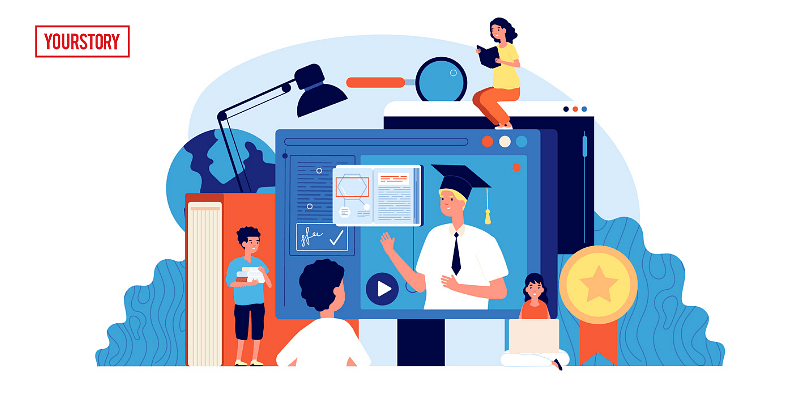Technological advancements have transformed the education sector with demands for innovative teaching and learning practices. Today, the traditional classroom environment is no longer conducive to take care of the needs of every individual student.
Edtech platforms or digital learning has been seen as the answer to outdated methods.
The COVID-19 pandemic has resulted in remote learning, hence making the adoption of edtech much easier and digital learning a better practice. The classrooms have been revolutionised with the improved learning efficiency and efficacy provided by the edtech platforms.
The innovative solutions offered by edtech platforms cater to every student in the class in a unique way. The learning has been made much more engaging with moving graphics and engaging technology. It helps in keeping the children engaged throughout, something teachers struggled to do in offline classes. Digital learning solutions have equipped children to think critically.
The aim to develop critical thinking skills is to inculcate the practice of looking for different solutions to multiple problems. It is not necessary that some approaches to a given problem may make equal sense to every student.
Thus, it is vital to give students the chance to see others work and play with alternative approaches. The virtual classrooms have enabled students to learn together even while sitting afar, in their own homes.
Let’s take a closer look at some of the ways that can help make the learning experience with technology more beneficial in terms of invoking critical thinking in school kids.
Teaching application-based subjects
To enable critical thinking in students, they should be taught application-based subjects, where they can learn the concepts by applying them in real life.
For instance, learning financial mathematics will help students understand how to apply math concepts and mathematical modelling to solve financial problems. This will result in longer retention of the concepts as they think critically to perform the experiment.
In-class debates
One of the many effective critical thinking exercises includes debates. In a traditional classroom setup, the process was time-consuming. However, in the new virtual classrooms, students can share recorded videos and audios of their arguments, making the process much faster and engaging.
Students can see the videos and listen to the audios in advance, make their observations, and come to the class prepared with their insights. It lets students participate in a deeper discussion with collaborations.
Group activities
Another benefit of edtech is the ease of conducting group activities. It is much easier to demonstrate math equations or physics concepts with audio-visual methods. Not only does it lead to better understanding among students, but they are more interested in the learning process.
Experiential learning
Experiential learning is learning from the experiences, but how would that happen with edtech? The digital platform offered by the edtech companies enables an immersive learning experience for students.
As they actively participate, they understand better by processing the information, resulting in quickly grasping the concepts and have a longer retention rate.
Inspire creativity
Edtech platforms offer tools that help inspire children to create something new like designing websites, creating apps and games, writing blogs, etc.
Children need to be provided with the right tools to be inspired to create something innovative. The focus on rote learning and marks pushes back the creativity in school kids. Students need to be able to think critically to innovate.
These are a few ways critical thinking can be enhanced. It goes without saying how students have become more engaged and active learners with the flexibility and fluidity of technology.
For instance, being proactive. In a physical classroom, it is hard to receive a response from students, but digital platforms allow instructors to poll students directly without bringing too much attention to the individual. Furthermore, innovative learning spaces are also responsible to reflect the skills that young learners need in 21st-century society.
Today, digital technologies are redesigning classrooms. Integration of advanced tech into the educational curriculum ensures children learn and build new skills.
For example, a science exam can become a learning experience if software corrects students simultaneously as they go wrong. It makes students more likely to remember correct answers and encourages them to study harder.
In a nutshell, technology integration due to edtech platforms offers innovative learning spaces to students to expand and challenge their knowledge and ability. Learning spaces can be personalised to meet individual needs, but there is also a positive impact of engagement through innovative strategies.
(Disclaimer: The views and opinions expressed in this article are those of the author and do not necessarily reflect the views of YourStory.)










